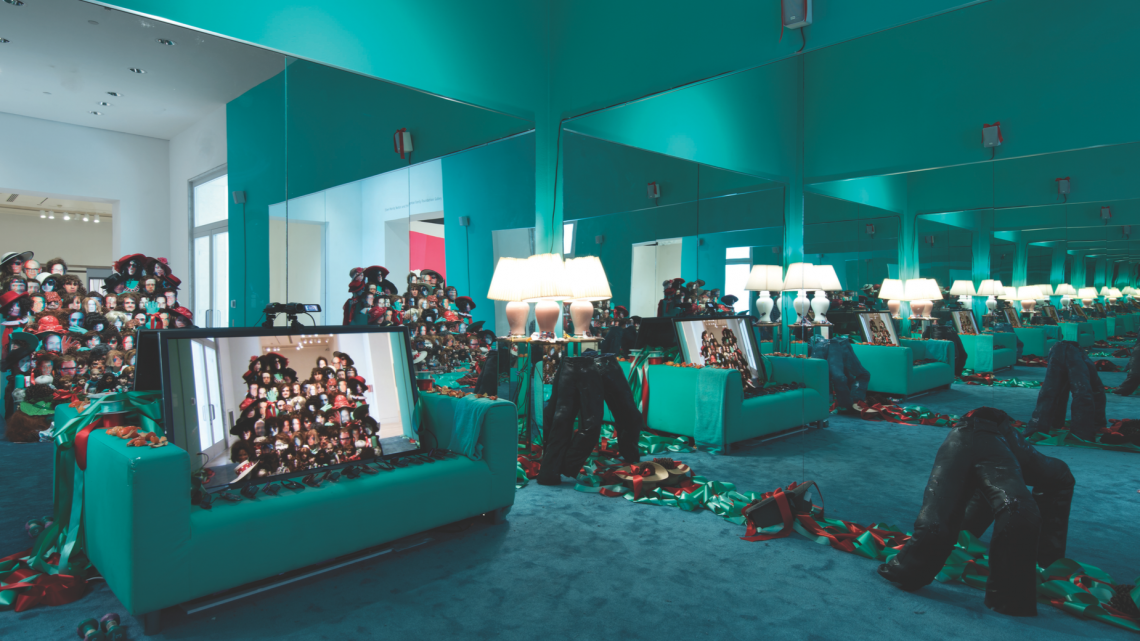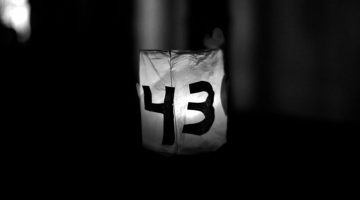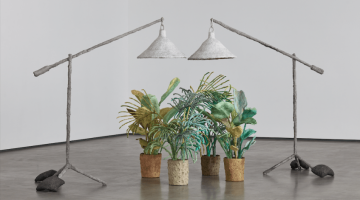In a review of one of the past decade’s many unmemorable Whitney Biennials, Peter Schjeldahl’s takeaway was that we had come to a pass where critics would have to content themselves with parsing the narrowing gap between the pretty good and the not-so-hot, implying a point of final homeostasis that hovers around the kinda okay, with all of the boredom that appertains. To put additional words into his mouth, we might go on to say that, at that point, the entire art world had become a vastly interchangable MFA exhibition, a place where the perpetual recirculation of threadbare clichés could proceed with impunity and without shame. So long as any viewer is willing to mask his or her intellectual dignity behind a smiley-face icon, it’s also okay, mostly because any more exacting standard of seriousness and grand artistic ambition have gone the way of the dodo. As Andy Warhol put it in one of his more prophetic moments, “art is about liking things.” And now, almost half a century later, we have lots of “liking” taking the forms of Yelp reviews, Artforum top ten lists (mercifully discontinued as of late), the odious Facebook like icon, and no good reason to continue the charade of the museum being a place where cultural production can be understood in terms that are any different from those of everyday entertainment.
On the biennial front, things haven’t changed much, as can be surmised from the recent Made in L.A. exhibition that closed a few weeks ago at the Hammer Art Museum. It was all “kinda okay,” but the longer I examined the work of 35 artists and artistic collaborations contained therein (curated by Connie Butler and Michael Ned Holte), the closer to “meh” the aggregate experience became. Certainly, the production values of the exhibition were impressive, earmarked by a judicious installation and a beautifully designed catalog that maybe looks a bit too high fashion for its own good. And the exhibition had a few high points, such as the room full of optically vibrating monochromatic paintings by Marcia Hafif and the ceramic works by Magdelena Suraez Frimkiss. But in other cases, the show lapsed into a kind of outright silliness larded with a stunning amount of selective art historical amnesia.
Said amnesia is relevant because Holte landed the curatorial gig as a response to his Artforum review of the original Made in L.A. exhibition from two years ago. There, he complained that the selections represented predicable and well-worn lineages that had no reason to be exhibited together, which as far as I can tell is the obvious problem with every biennial. Presumably, he would remedy this situation when given the curatorial car keys, and in some ways he did just that, in that the artists included in the recent exhibition hail from far more diverse gender and ethnic backgrounds. But despite this change of cast, for the most part, the work that they present is still attached to many of the same lineages that Holte earlier decried to be instances of “southern California navel gazing.” It includes lots of work that seems to want to be critical of celebrity media pastiche only to tacitly admit a kind of dumb envy of it, much of which was featured in the line- up of regularly scheduled performance events that were part of the exhibition. If we were to take a peak at some back issues of High Performance Magazine from the early 1980s, we would remember where we saw things much like it—in a three-decade old southern California tradition of performance artists such as Lowell Darling, John White, and Dark Bob who performed as stand-up allegorists of the special could- have-been-a-contenderism that was tinctured with existential dread. Their pre-cellphone work harked back to an older era of performance art taking place in a bygone age of cigarette-addled actors waiting for calls from their agents, calls that never came. Now we have the Internet to host such shenanigans. Lucky us.
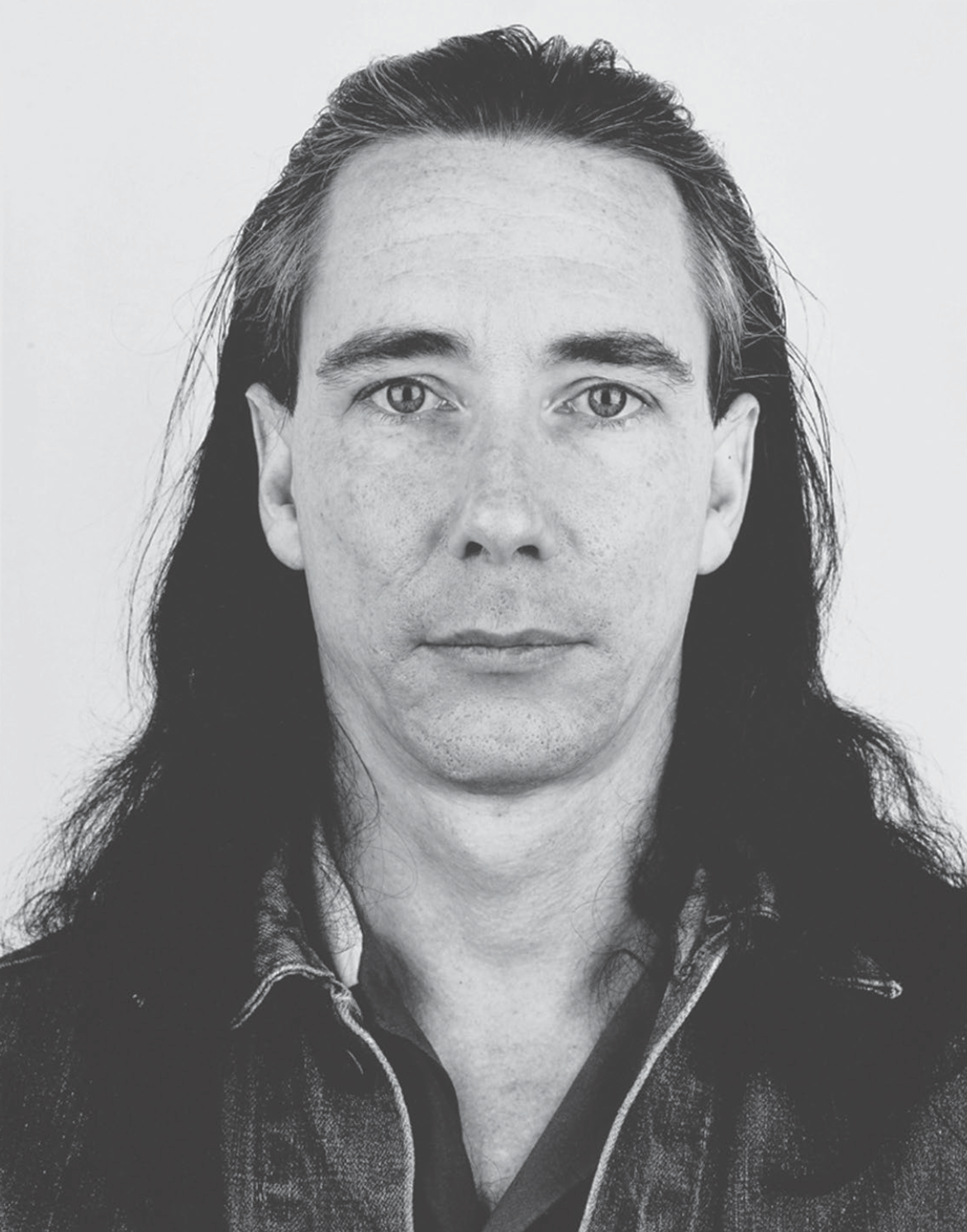
Mike Kelley. Courtesy of the Internet.
We can also note that a sizable slice of Made in L.A. looked like a reunion of 2nd generation Mike Kelley impersonators (for example, the works by Samara Golden, Harry Dodge, and Barry Johnston), their inclusion no doubt intended as an homage to the artist who took his life in 2012, as well as an assertion of the continuing influence of his work on younger artists. It also bears noting here that, despite Kelley’s international art world celebrity, even his earliest work was fully in step with a much longer-standing southern California interest in revealing the operations of the urban id that harks back to Ed Kienholz, Chris Burden, and the Kipper Kids—all of whom were very visible in the early 1970s. Where as Kelley’s work extended this tradition by showing the uncanny aspects of its discrete structures and obsessive logics, the current crop seem far too content to imitate his handling of materials without fully grasping the depths of his sinister purposes, making their work look like Disney Channel versions of routine transgression. We also need to remember that it was Paul Schimmel’s 1992 Helter Skelter exhibition that launched Kelley as an international art star, even as it also reprioritized much of the Southland’s artistic landscape. I hasten to add that Helter Skelter took place twenty years ago, meaning that it might now be time for the art of the Southland to move on, before all of the kids- from-fame starfucking ends up being mocked in an Amy Poehler ad for Old Navy blue jeans—whoops, it just happened.
There is much else that can and should be said about Made in L.A., but it seems far more interesting to stop here and contrast that exhibition to the seventh iteration of the Yerba Buena Center for the Arts Bay Area Now triennial, on view until October 7. Despite its shortcomings, Made in L.A. was still head-and- shoulders more interesting than Bay Area Now. And the reasons for this are simple: the Hammer show at least made an attempt to look good by making the artworks included therein look like they were made by artists who intended their work to be viewed as art. Bay Area Now includes work from about 200 artists, but just as cable television gives its viewers 400 channels of nothing to watch, so too does Bay Area Now give its unfortunate viewers nothing to really see excepting its pretentious algebra of inclusion established by way of an ill-advised experiment in “decentralized curation.” The implication of this charade of decentralization is that the purpose of such exhibitions is something other (read: influence peddling via the sub-contracting of influence peddling) than providing a stimulating experience for those who would invest their time to view it. No “meh” there, just lots of frowny face.
Here is how that algebra tried to work. YBCA curators Betti-Sue Hertz and Ceci Moss put together a jury that was tasked with selecting 15 local arts organizations (most, but not all, being non-profits, although those that are not formulate their programming as if they were). These chosen organizations then sub-curated little mini-exhibitions that reflected their respective missions, all of which were artlessly shoehorned into the YBCA galleries so as to create the unfortunate impression of a third-tier art fair—a cruel joke on how the not-for-profit art world has become co-opted by the neoliberal imperatives of commodification. Only in this case, the commodities in question are the career profiles of arts administrators, which are prized by way of their “positionality” amidst the non-profit world’s interlocking directorate of board memberships and advisory committees. This joke was born out by what may be the best work of art in the exhibition, which was not even intended as an artwork. It was a title tag informing the viewer about one of the selected organizations called Important Projects. Its directors were acknowledged to be Joel Dean and Jason Benson, who had invited Jason Benson, Joel Dean, Edgar Mojica, and the Yerba Buena Center of the Arts staff. There, we see the varnish fully stripped from the normative operations of non-profit business-as-usual as it might be scripted from conferences of the National Association of Artists’ Organizations, especially from its sessions devoted to “partnering” and “mission diversity” (which is how many arts organizations try to advance their programming into the world of social justice philanthropy).
For the sake of all of those Facebook snivelers who are always whining about why it is so important to find something to “like” in every cloudy situation, I will here concede a few glimmers of tarnished silver in BAN7’s lining. The FOR-SITE Foundation had the good sense to show a trio of three-dimensional works by one artist (Nathan Lynch), set against a wall emblazoned with a poetic text. The piece was titled Dead Reckoning, and looked as if the Joan Miró mushroom factory had dropped huge specimens of glazed ceramic on a trio of redwood buoys. Although the work presented itself in terms of a sculptural yesterspeak that we might remember from the late 1980s (one might think of Tony Cragg or Robert Therrien), I am beginning to feel that this may not be such a bad thing, because the index of that which is up-to-date seems to be everything that earlier artists would have simply rejected as being too feeble to show in public.
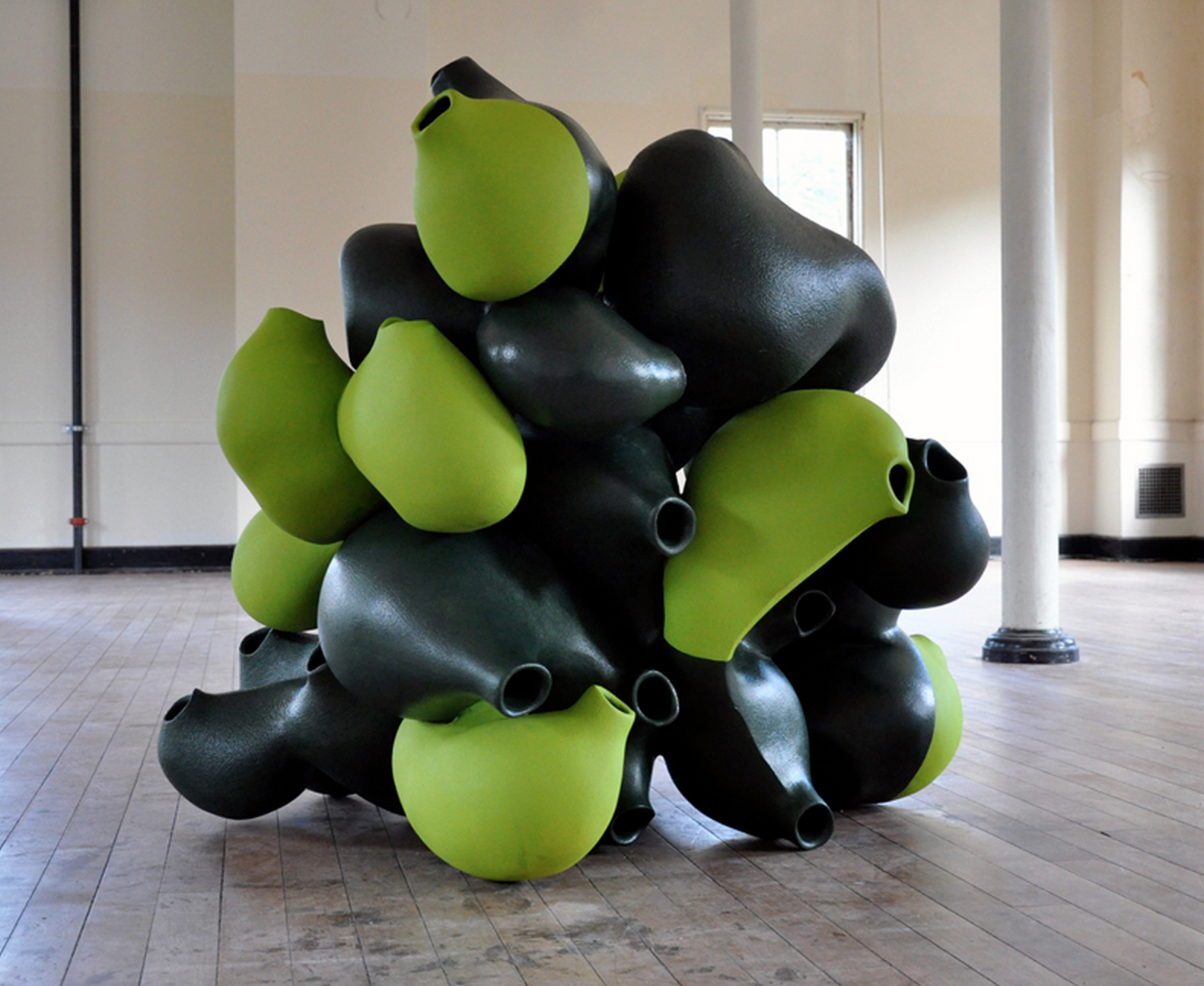
Nathan Lynch.
Another silver-lined moment was the presentation by the Bay Area Art Workers Alliance, which was a post-minimalist installation titled Invisible Labor that mimicked a shop space. The BAAWA roster represents about half of the artists included in the entire BAN7 exhibition, and it is fair to assume that the installation was a collaborative project of some kind. Nonetheless, the idea of an exhibition featuring the work of that many artists who do the often times unrecognized, behind-the-scenes labor in galleries and museums seems a timely one—and I might respectfully suggest here that the BAAWA expand its membership beyond preparators and art transportation workers so as to include other kinds of museum-related toilers, including office workers. But as it stands, their installation gets lost in the circus, and there is no chance to see work by the individual artists who comprise the group.
Let’s assume that all of the preliminary tweets, Facebook updates, and blog reviews have been logged, and none have broached any real argument with Kenneth Baker’s dismissive take on the exhibition as being “anemic and uninspired” (SF Chronicle, July 18). For that reason, there is no need to get too particular about it or Made in L.A. here. Better that we should get on with registering the points of contrast between the two exhibitions, and see if we can touch on some larger issues that may prove to be instructive. In their own very different ways, both tell a story of problematic priorities that have much to do with the persistent and pervasive vexations of each city’s art world. In L.A., to be an artist means to labor in the shadow of the Hollywood dream machine, which provides an opportunity for firsthand glimpses of its inner clockworks, but also the danger of being seduced by its tinsel-shrouded priorities—which at this juncture has already happened to the entire art world, by which I mean the entire global art world. Until someone founds a southern California chapter of starfuckers anonymous, that will continue to be a problem.
The northern California art scene has picked a very different poison, but it is still quite toxic for art. I refer here to nonprofiititus, and although the gullible might see it as a way of warding off good old-fashioned neo-liberal starfucking, the project of non-profit sheep trying to legislate artistic vegetarianism in a world run by neoliberal wolves is looking a bit pathetic, especially in the way that it leaches the flavor and nutrition from the artistic vegetables in its garden. This is so for several reasons that are brought to light in BAN7. One of these is called the Fallacy of the Organizational Chart. It reflects on how, with hidden envy hiding behind the pseudo-criticality of loyal opposition, the real culture of non-profit organization mirrors corporate organizational models, especially at the upper level where the first earmark of executive status is the ability to hire someone else to do one’s job. The organization of BAN7 seems drenched in these cultural assumptions (manifested in its chain of curatorial sub-contracts that turn the exhibited art into an afterthought), even if it is covered in the greasepaint of a kind of noblesse oblige that pretends to want to see a thousand artistic flowers blossom while keeping the lion’s share of manure for themselves and their hard-working assistants.
The second of these reasons is called diversity fetishism. Obviously, cultural diversity in both programming and perspective is a good thing for any arts organization and in any art community, but it should not be elevated as a singular goal. In art, difference may be worth a lot, but it is not worth all of those other things that art can and should do for its audience, such as being able to engage the interest of that underserved community comprised of sophisticated onlookers. Nonprofititus has a blind spot on this front because it cannot put those other things in a statistical appendix and attach it to a grant application, so they kind of just go away. It is also odd that, for all of BAN7’s advancement of “diversity,” anything resembling political art seems magically scrubbed from the mix, giving some credence to the view that the “identities” featured are only loyal opponents whistling in a gathering darkness.
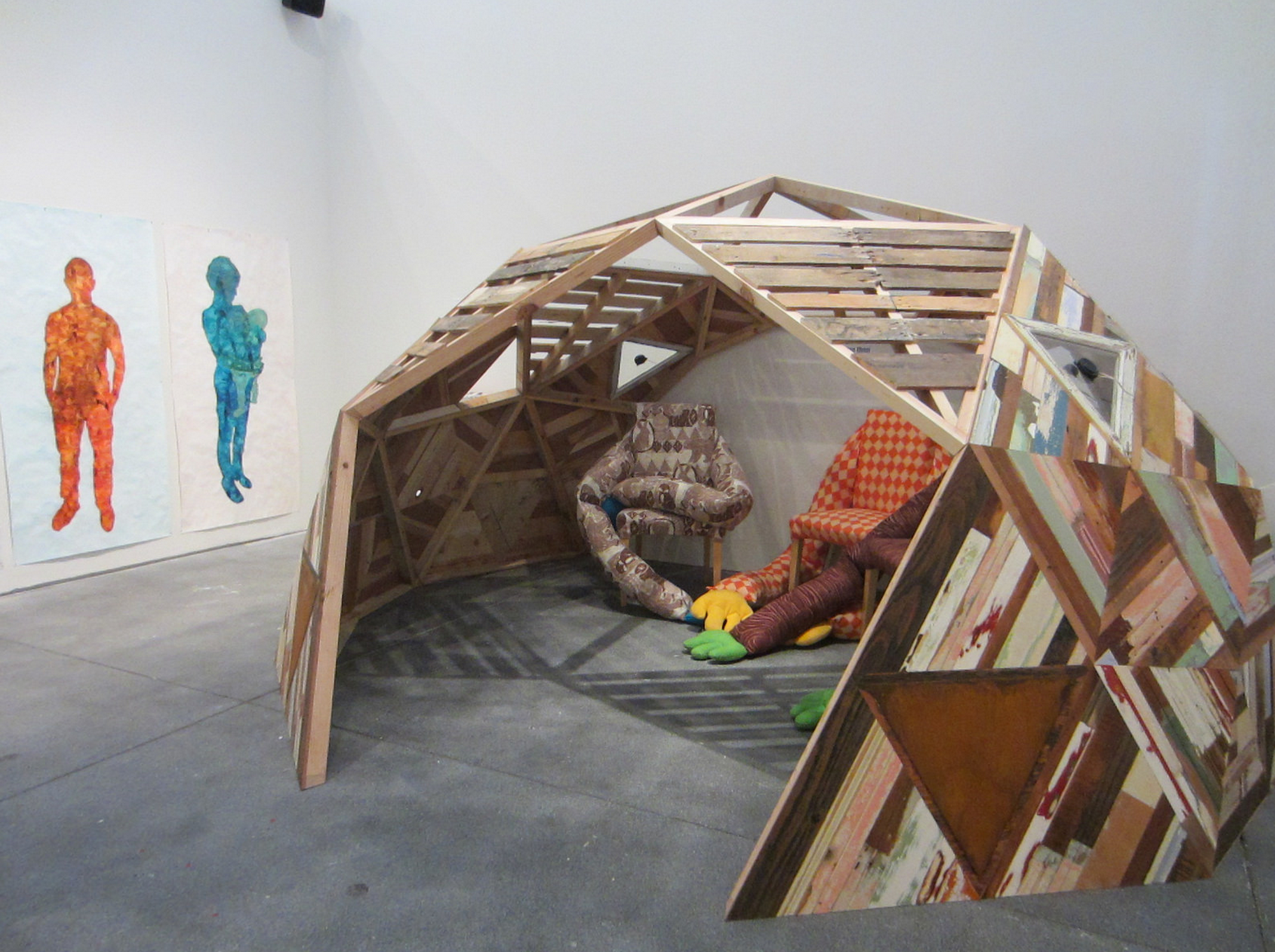
Adobe Books & Arts’s Backroom Gallery, part of BAN7.
Finally, there is the fetishism of the non-profit organization itself, apart from its instrumentalization of diversity fetishism. This is felt in northern California like no other place in the country. We are often told that such organizations are our area’s unique historical contribution to the nation’s artistic legacy, but I am here to tell you that this is only so much art historical hooey that fails to even rise to the standard of wishful thinking. Yes, from 1950 to 1965, there was a kind of golden age of cooperative, artist-run galleries made possible by cheap rents, and then there was a subsequent silver age of artist-run spaces that were given substantial support from government funding agencies. It is a naïve mistake to see the latter as a natural evolution of the former, because the differences between these two very different structures loom much larger than any apparent similarities. The earlier operations were outposts for intentional communities of desire, while the later were recast as farm teams for the gallery system and zones for the cultivation of loyal opposition insofar as the Vietnam War was concerned. With those grants came reporting requirements, and with those requirements came the eventual necessity for “non- profit accounting” in service to ever more exacting thresholds of “compliance” (read: obedience). The difference between that model of non-profit operation and the current one is equally stark; only now the keynote is something called “venture philanthropy,” which means that funders are not merely supporting organizations, but that they are exercising more direct influences on their programming.
Certainly, several of the organizations featured in BAN7 are on the renegade fringe of the non-profit world I have sketched, but in this exhibition, they are tarnished by proximity. Once again the question of “who gets to be an artist” can be seen fading away from repeated misuse, while the real question of “what constitutes a successful work of art” becomes evermore pressing and unavoidable—bad news for the world of non-profit arts organizations because it will be a long time before any venture philanthropist will want to underwrite its answer.
